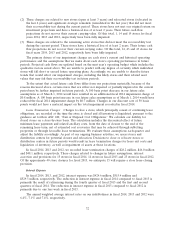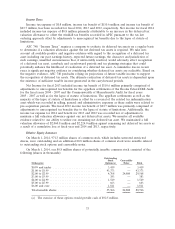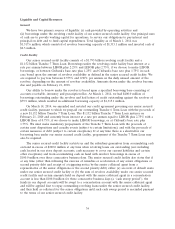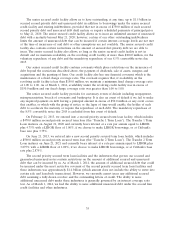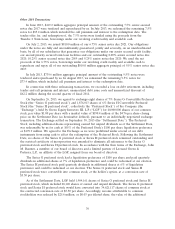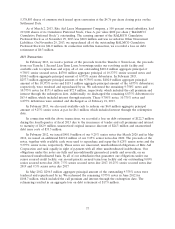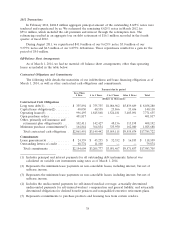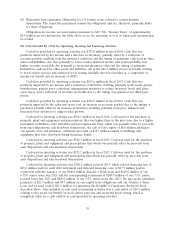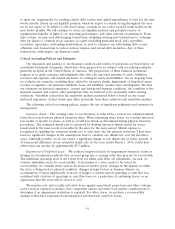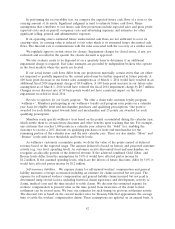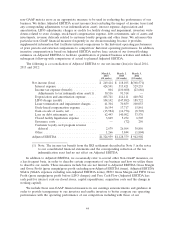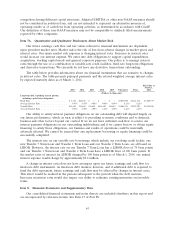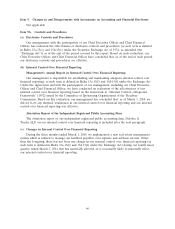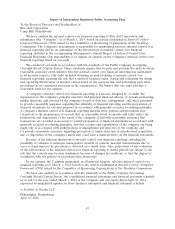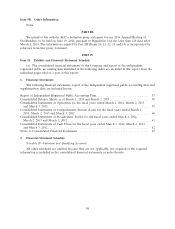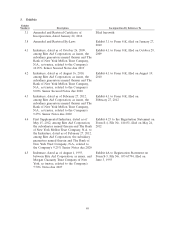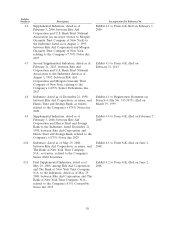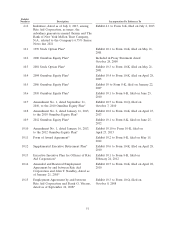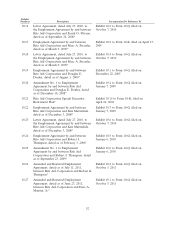Rite Aid 2014 Annual Report Download - page 43
Download and view the complete annual report
Please find page 43 of the 2014 Rite Aid annual report below. You can navigate through the pages in the report by either clicking on the pages listed below, or by using the keyword search tool below to find specific information within the annual report.In performing the recoverability test, we compare the expected future cash flows of a store to the
carrying amount of its assets. Significant judgment is used to estimate future cash flows. Major
assumptions that contribute to our future cash flow projections include expected sales and gross profit;
expected costs such as payroll, occupancy costs and advertising expenses; and estimates for other
significant selling, general and administrative expenses.
If an operating store’s estimated future undiscounted cash flows are not sufficient to cover its
carrying value, its carrying value is reduced to fair value which is its estimated future discounted cash
flows. The discount rate is commensurate with the risks associated with the recovery of a similar asset.
We regularly approve certain stores for closure. Impairment charges for closed stores, if any, are
evaluated and recorded in the quarter the closure decision is approved.
We also evaluate assets to be disposed of on a quarterly basis to determine if an additional
impairment charge is required. Fair value estimates are provided by independent brokers who operate
in the local markets where the assets are located.
If our actual future cash flows differ from our projections materially, certain stores that are either
not impaired or partially impaired in the current period may be further impaired in future periods. A
100 basis point decrease in our future sales assumptions as of March 1, 2014 would have resulted in an
additional fiscal 2014 impairment charge of $0.8 million. A 100 basis point increase in our future sales
assumptions as of March 1, 2014 would have reduced the fiscal 2014 impairment charge by $0.7 million.
Changes in our discount rate of 50 basis points would not have a material impact on the total
impairment recorded in fiscal 2014.
Revenue recognition for our loyalty program: We offer a chain wide customer loyalty program,
‘‘wellness+’’. Members participating in our wellness+ loyalty card program earn points on a calendar
year basis for eligible front end merchandise purchases and qualifying prescriptions. One point is
awarded for each dollar spent towards front end merchandise and 25 points are awarded for each
qualifying prescription.
Members reach specific wellness+ tiers based on the points accumulated during the calendar year,
which entitle them to certain future discounts and other benefits upon reaching that tier. For example,
any customer that reaches 1,000 points in a calendar year achieves the ‘‘Gold’’ tier, enabling the
customer to receive a 20% discount on qualifying purchases of front end merchandise for the
remaining portion of the calendar year and the next calendar year. There are also similar ‘‘Silver’’ and
‘‘Bronze’’ levels with lower thresholds and benefit levels.
As wellness+ customers accumulate points, we defer the value of the points earned as deferred
revenue based on the expected usage. The amount deferred is based on historic and projected customer
activity (e.g., tier level, spending level). As customers receive discounted front end merchandise, we
recognize an allocable portion of the deferred revenue. If the achieved combined Gold, Silver, and
Bronze levels differ from the assumptions by 5.0% it would have affected pretax income by
$1.2 million. If the assumed spending levels, which are the drivers of future discounts, differ by 5.0% it
would have affected pretax income by $1.2 million.
Self-insurance liabilities: We expense claims for self-insured workers’ compensation and general
liability insurance coverage as incurred including an estimate for claims incurred but not paid. The
expense for self-insured workers’ compensation and general liability claims incurred but not paid is
determined using several factors, including historical claims experience and development, severity of
claims, medical costs and the time needed to settle claims. We discount the estimated expense for
workers’ compensation to present value as the time period from incurrence of the claim to final
settlement can be several years. We base our estimates for such timing on previous settlement activity.
The discount rate is based on the current market rates for Treasury bills that approximate the average
time to settle the workers’ compensation claims. These assumptions are updated on an annual basis. A
42


